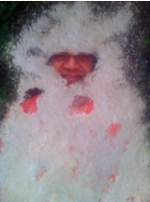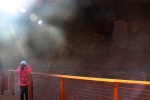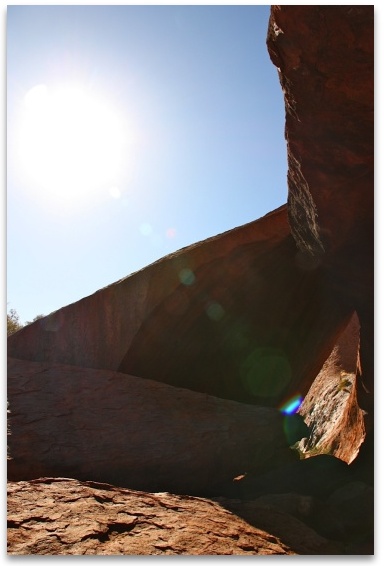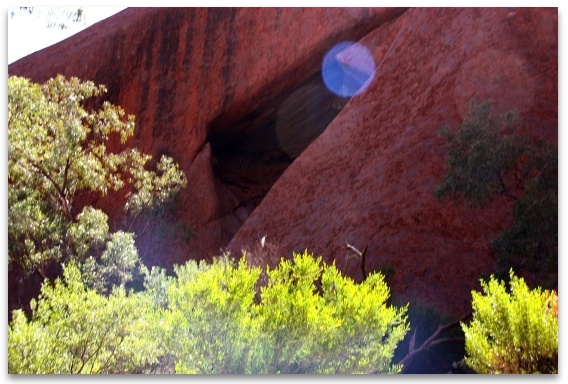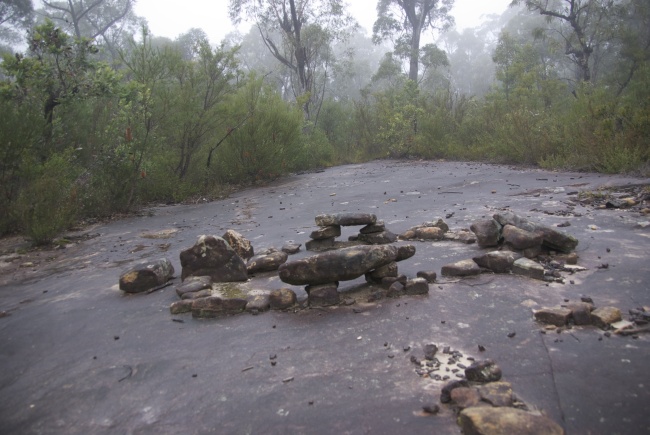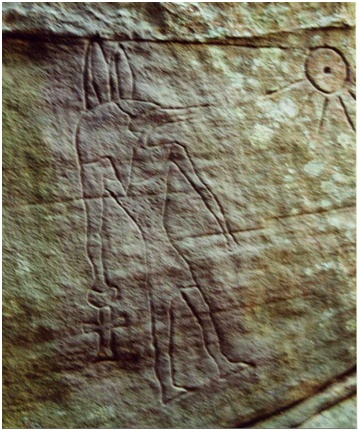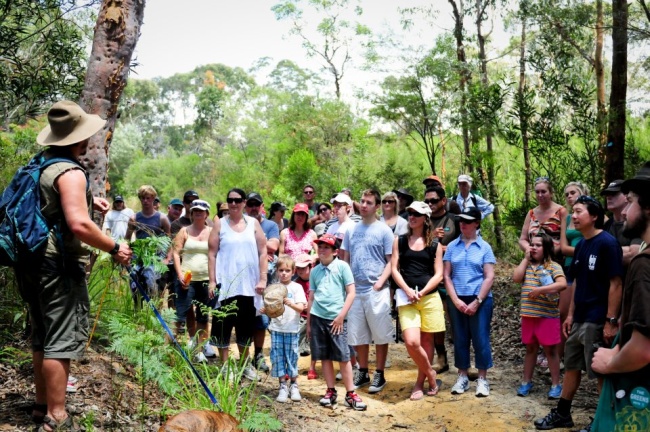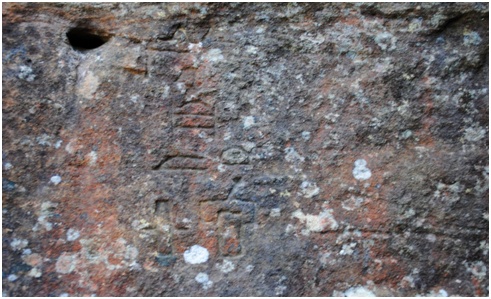Glastonbury Visit: The Abbey and Glastonbury Tor

Aerial View of Glastonbury Abbey site (source – Google images)
“Traditionally, the earliest Christian sanctuary in Britain. Legend says Joseph of Arimathea brought Jesus here and they built the old wattle and daub church. History records it as standing in 600 A.D.; and it burnt down when the entire Abbey Church were destroyed by fire in 1184 AD.

Leaflet from Glastonbury Abbey site
Archaeology tells us that Christianity was present in Somerset since earliest days. Glastonbury was important for pilgrimage – even being called “The Second Rome.” The Abbey became the largest and richest in England. St Bridget, St. David and St. Parick are said to have visited.
St. Dunstan was educated at Glastonbury Abbey and was Abbot here until he became Archbishop of Canterbury. He introduced the Benedictine Rule to Glastonbury and into England. Another Glastonbury monk, Sigeric, became Archbishop of Canterbury in 10th century.
In 1191 legend says that the monks found the buried remains of King Arthur and his Queen Guinevere. In 1278 they were re-buried in the chancel in the presence of King Edward 1 and Queen Eleanor.
In succession, three stone Abbey churches have stood here. The remains you see date from 1184 until 1539, when the Abbey was seized on the orders of King Henry VIII, during the Dissolution of the Monasteries. It was demolished gradually and used as a ‘quarry’ for building stone. The Abbot’s Kitchen is one of the Abbey’s remaining complete buildings: and from April to October there are demonstrations about the life of the monks.
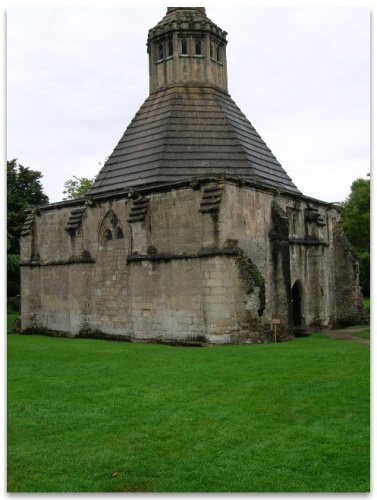
The Abbot’s Kitchen is one of the remaining complete buildings at Glastonbury Abbey
Behind St. Patrick’s Chapel is the Glastonbury Holy Thorn Tree, which flowers twice each year. The Holy Thorn is said to have originated from a tree that grew, according to legend, when Joseph of Arimathea plunged his staff into the ground at Glastonbury and it burst into leaf.
The grounds contain 36 acres (about 14 hectares) with a fine selection of trees, wildflowers and bulbs for interest and seasonal variation, wildlife, ponds and a cider apple orchard.
In 1907, the ruins were bought and preserved. The Abbey is a Charity; “our only income is from you, the visitor.” The above information is taken from the leaflet given when you enter the grounds of the Abbey. You can refer to The Custodian. Glastonbury Abbey, Somerset. BA6 -9EL. You can contact the Glastonbury Abbey here
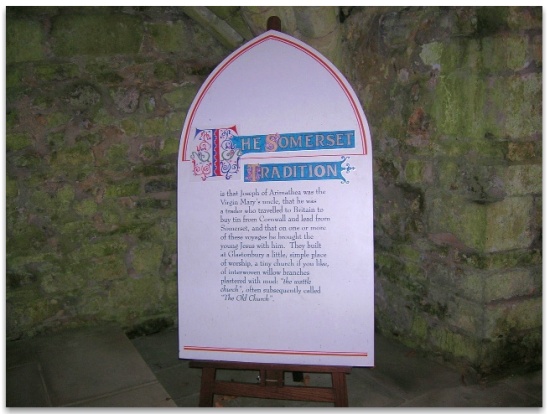
Commemoration of Joseph of Arimathea and Somerset at Glastonbury Abbey
When John and I arrived at Glastonbury town, we were amazed about the numbers of people and shops that were there; selling all kinds of what could be loosely described as ‘esoteric aid’ shops with ‘new age’ connotations. Many people looked happy enough – others seemed lost, as if searching for something. We were happier when we entered Glastonbury Abbey behind high stone walls. It is run by a charity, although privately owned by folk who live in Australia. A lovely peaceful place with calm energy. We enjoyed strolling around the ruins and walking the green lawns.

John Barrow standing at the ruins of the Church at Glastonbury Abbey
We came across the original site of the Wattle and Daub referred to as ‘The Old Church”. After visiting the Camargue in South of France and witnessing the replay of the landing of Jesus’ family when escaping Egypt – our memory is Joseph of Arimathea, uncle to Mother Mary, was among them, and after a short stay in Gaul he continued with others to his familiar business route of shipping and tin mining in what is now known as Cornwall and Wales. At the time, Glastonbury was an island surrounded by marsh lands (similar to the Camargue) a safe place when the Island of Britain was still occupied by the Roman Empire. In earlier days Joseph traveled with Issa – north to Scotia. (Scotland) – much evidence and research of Jesus traveling there is given by Barry Dunford, in his website www.sacredconnections.co.uk/holyland/christ_mission.html

Issa – Jesus in Scotland (source:www.sacredconnections.co.uk)
It is reported that Joseph had already acquired land from the local ruler, Arviragus to establish a place of learning and meeting – hence the Wattle and Daub building.
Jesus, (although I prefer to call him Issa) referred to himself as coming straight from the Father (meaning heaven). He never came to start a new religion and wanted to help people to rethink their way of life. He wanted to discourage sacrifice – he wanted to discourage slavery – he wanted people to understand of where He really came from and the message that He brought in the name of The Father, for people to love one another as He loved them. He spoke with clarity, being overlighted with Divine Light so that people felt compelled to stop and listen and marvel at His words. He performed miracles.
He was the anointed one. The word “Christ” comes from the Greek word Christos. By itself, Christos is the ancient Greek translation of the Hebrew word masiah (Messiah) which means “anointed one.” Later with the development of a church and a religion it eventually came to be called “Christianity.”
At the last supper Issa has been portrayed to say, “This is my body, this is my blood.” The church has placed the focus here – and this is not really the focus. The focus is Love, the focus is the Divine Kingdom of God, a cosmic kingdom of oneness of spirit.

The message of Issa-Jesus – a cosmic kingdom of oneness of Spirit
Issa often used symbology in teaching. His blood and His body was not of this earth. He was showing everyone that His Blood was Holy and His Body was Holy and that He had come directly from The Father, or another world. This is the Holy Grail. This is the Sang Real … the Blood Royal … The Holy Blood and The Holy Body through which it flowed. He came from the Cosmos.
Issa’s message was, “Love one another as I have loved you.” and that, “The Kingdom of God is within you.”
As a Medium I have, with agreement, allowed Beings of Light to use my voice box to speak through me. I have been blessed a number of times with the Light Being who is Jesus present himself and speak to us. In particular was the first meditation we had for the New Millenium. We all in the room felt His presence as He took over my body. He could be seen clairvoyantly dressed in pale blue and white robes, by a number of people, and he stood standing with His hands uplifted towards everybody in the room. Everybody was moved to tears and felt overwhelmed by His presence, including me. He was sharing His energy with us, not speaking much at all – but He did say:
“Many people await my return, but I have never left, all you have to do is ask, and I will come.”
The room was filled with a warm feeling of Universsal Love and Peace. And when I sat down I became aware of footprints in the carpet, which took a long time to fade.
Returning to our visit to Glastonbury Abbey we found the place where the monks found the buried remains of King Arthur and his Queen Guinevere.
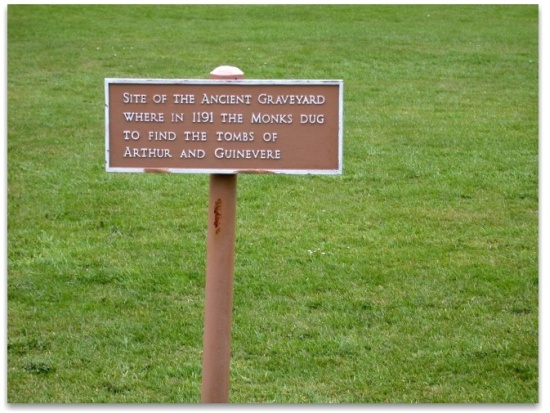
Plaque at Glastonbury Abbey marking the site of the graveyard where
the remains of Arthur and Guinevere were found

Plaque in Glastonbury Abbey marking the discovery site where
the graves of Arthur and Guinevere were found
And finally before we left the Abbey, we found the Holy Thorn Tree that is said to have originated from the staff Joseph of Arimathea plunged into the ground on Wearyall Hill on the way to The Tor.
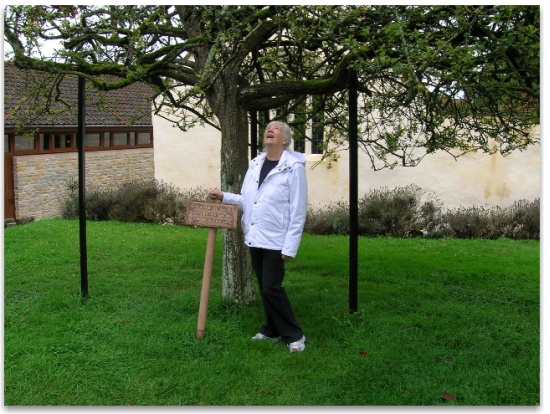
Valerie standing under the Holy Thorn Tree
It was a stiff climb, without handrails, up to the Tor above the Abbey at 158 metres above sea level. There remains the ruins of St Michaels church destroyed in 1539 on King Henry VIII’s orders. There also the Last Monk from Glastonbury Abbey was hung, drawn and quartered. I refused to ‘tune into’ that energy.
The energy up there was breathtaking – it was easy to see how Glastonbury town was built on an island and that large, wide flat plains existed in a full circle around it in which was obviously once a marshland. Hills rose in a great distance around a larger circle that had an opening, like a gateway, where the sea would have once come in and flooded the plains.
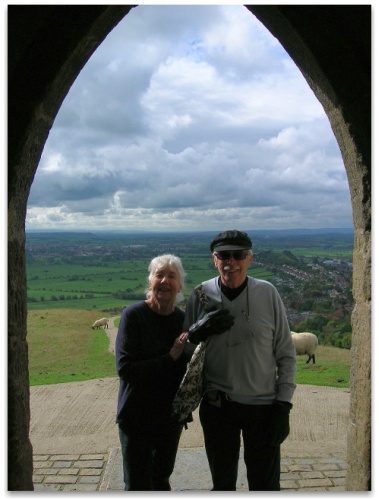
Valerie and John at Glastonbury Tor
This was looking towards Wales. I could easily see why Glastonbury was once called the Isles of Avalonia and existed as marshlands when King Arthur ruled 1500 years ago and of course when Joseph of Arimathea lived there.
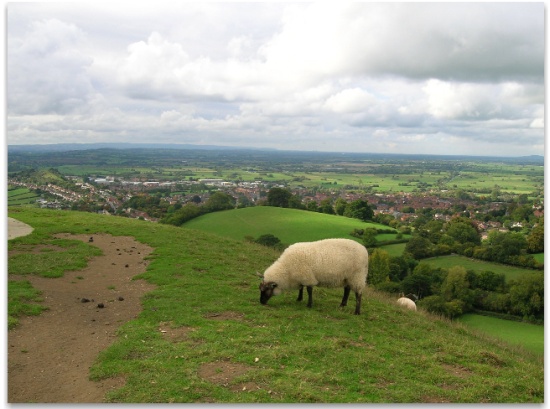
View from Glastonbury Tor
Joseph is said to have died at Glastonbury on July 27th, A.D.82. On his tombstone was written, in Latin, “After I had buried the Christ, I came to the Isles of the West; I taught; I entered into my rest.”
We later visited the Chalice Well and its Holy Waters. Chalice Well is one of Britain’s most ancient wells, nestling in the Vale of Avalon between the famous Glastonbury Tor and Chalice Hill.
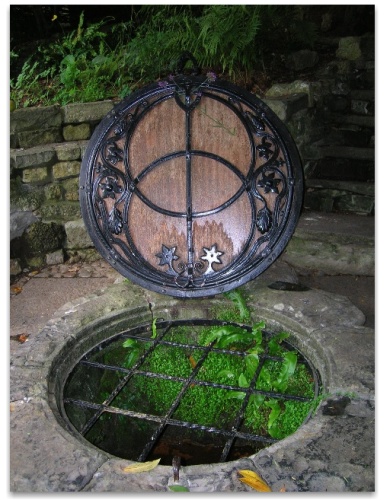
Chalice well with the Vesica Piscis on the cover
Go to PART TWO: our visit to Stonehenge and Avebury
